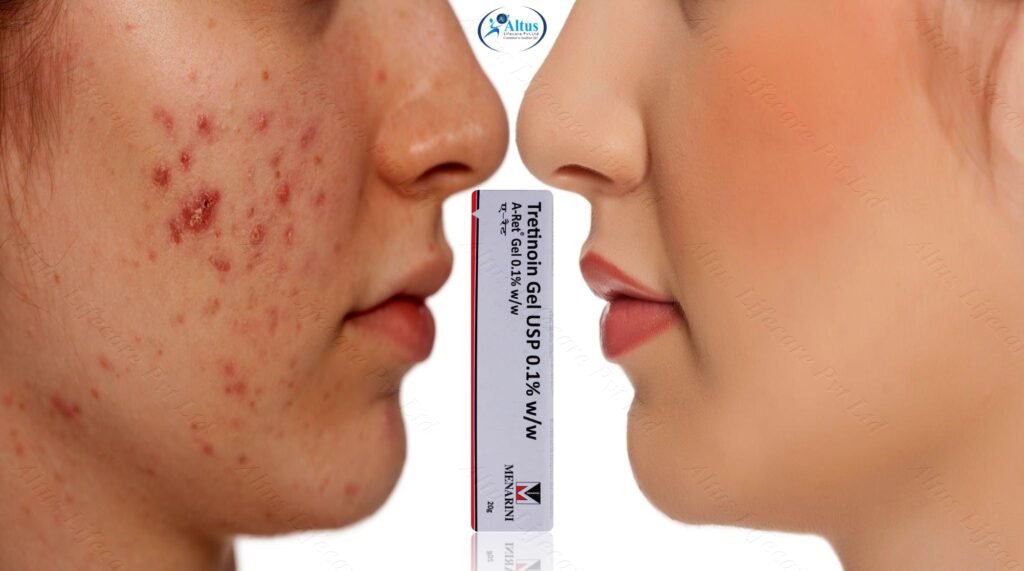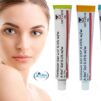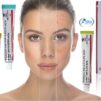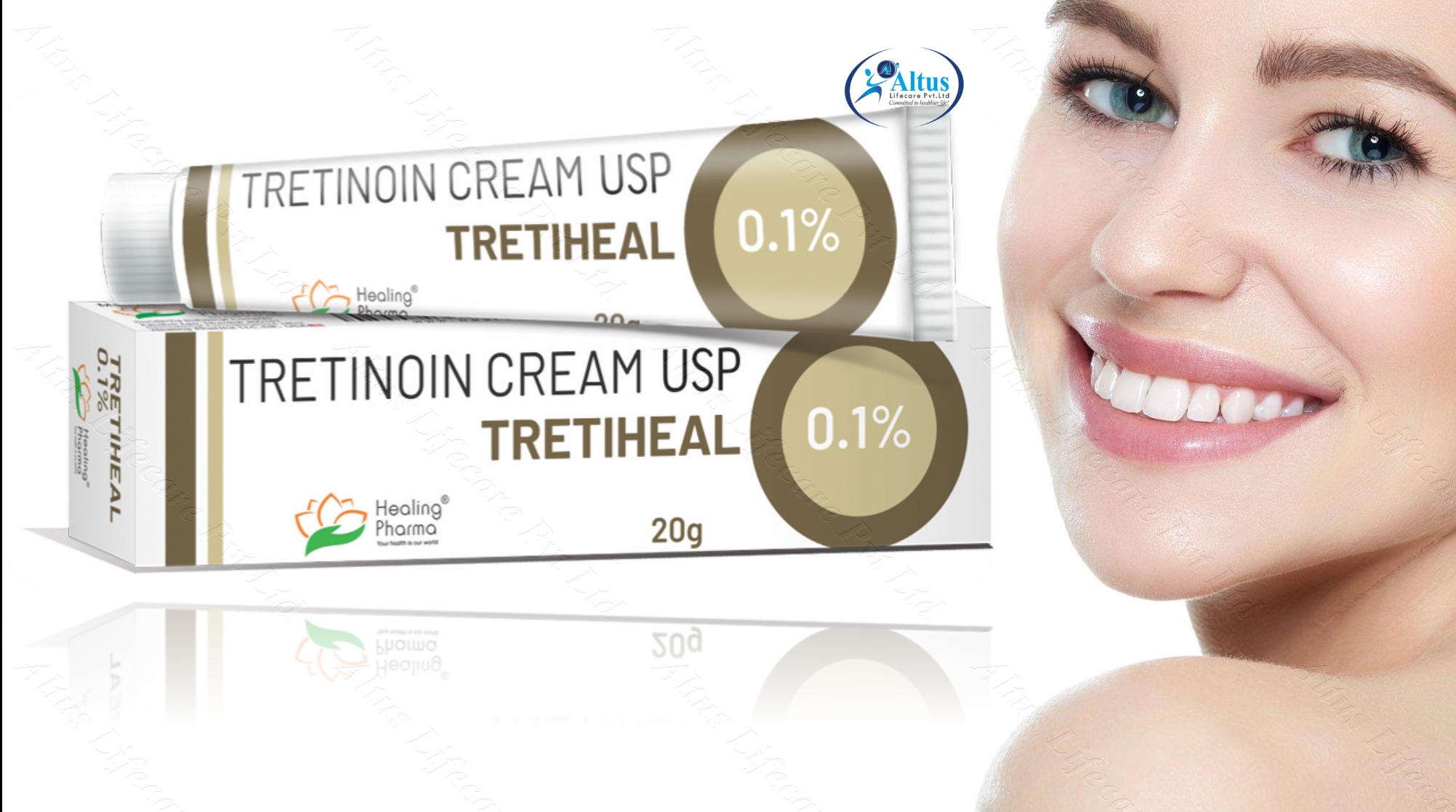
Understanding the Benefits and Proper Use of Tretinoin Cream
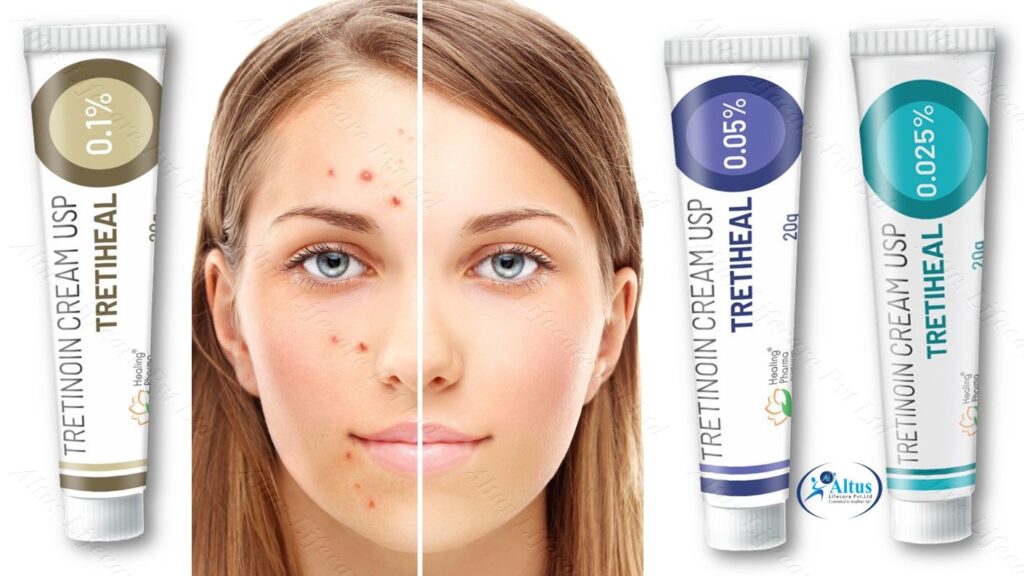
What is Tretinoin?
Tretinoin, also known as all-trans retinoic acid, is a derivative of vitamin A. It belongs to a class of compounds called retinoids, which are renowned for their skin-rejuvenating properties. It is available in prescription strength and is commonly used to treat acne, reduce signs of aging, and improve overall skin texture and tone.
How Does Tretinoin Work?
Tretinoin works by speeding up the skin’s natural exfoliation process and promoting cell turnover. It helps unclog pores, preventing the formation of acne lesions, and stimulates the production of collagen, a protein that gives skin its firmness and elasticity. By increasing cell turnover, it also helps fade dark spots, smooth out fine lines, and improve overall skin texture.
Benefits of Using Tretinoin
Reducing Acne and Breakouts
Tretinoin is highly effective in treating acne, particularly non-inflammatory and mild to moderate inflammatory acne. It works by preventing the formation of new comedones (clogged pores) and reducing the size and redness of existing acne lesions. Regular use of it can significantly improve acne-prone skin.
Improving Skin Texture and Tone
One of the remarkable benefits of it is its ability to enhance skin texture and tone. By increasing cell turnover, it helps shed dead skin cells, unclog pores, and smooth out rough patches. With continued use, it can give your skin a more refined and even appearance.
Minimizing Fine Lines and Wrinkles
Tretinoin is often referred to as the gold standard for anti-aging skincare. Its collagen-stimulating properties help reduce the appearance of fine lines and wrinkles, making the skin look smoother and more youthful. It can also help prevent the formation of new wrinkles.
Treating Hyperpigmentation and Dark Spots
Hyperpigmentation, such as dark spots and melasma, can be a source of frustration for many individuals. it can help fade these areas of uneven pigmentation by exfoliating the skin and promoting the growth of fresh, evenly pigmented skin cells. Over time, tretinoin can contribute to a more even skin tone.
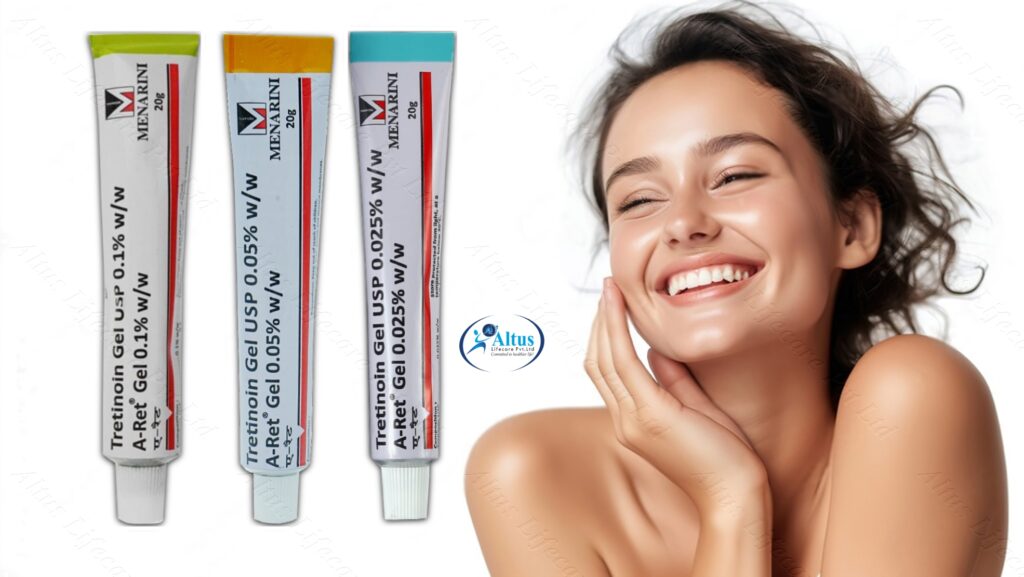
To reap the benefits of tretinoin while minimizing potential side effects, it’s essential to use it correctly. Here are some guidelines for proper tretinoin application:
Step 1: Cleanse and Prep Your Skin
Start by cleansing your face with a gentle cleanser to remove any dirt, oil, or makeup. Pat your skin dry and wait for a few minutes before applying tretinoin.
Step 2: Apply a Pea-Sized Amount of Tretinoin
Take a pea-sized amount of tretinoin and dot it onto your forehead, cheeks, chin, and nose. Gently massage the product into your skin, ensuring an even application. Avoid applying it too close to the eyes, mouth, or nostrils.
Step 3: Gradually Increase Frequency of Use
When starting with tretinoin, it’s best to begin with a lower concentration and gradually increase the frequency of use. Start by using it every other night, and as your skin tolerates it, you can progress to nightly use.
Step 4: Moisturize and Protect Your Skin
After applying tretinoin, wait for 20-30 minutes to allow it to absorb fully. Then, follow up with a moisturizer to hydrate your skin and reduce potential dryness or irritation. During the day, always apply a broad-spectrum sunscreen with an SPF of 30 or higher to protect your skin from harmful UV rays.

Common Side Effects of Tretinoin
While tretinoin can work wonders for your skin, it’s important to be aware of potential side effects. Common side effects may include:
Initial Skin Irritation and Dryness
During the initial stages of using tretinoin, you may experience redness, dryness, flaking, or mild peeling. This is a normal part of the adjustment period and should subside as your skin adapts to the treatment.
Increased Sensitivity to Sunlight
Tretinoin can make your skin more sensitive to sunlight. It’s crucial to protect your skin by using sunscreen daily and wearing protective clothing, such as hats and sunglasses, when exposed to the sun.
Temporary Worsening of Acne
In some cases, tretinoin can cause an initial flare-up of acne before improvements become visible. This is known as the “purging phase” and is temporary. As your skin adjusts to the treatment, the breakouts should subside.
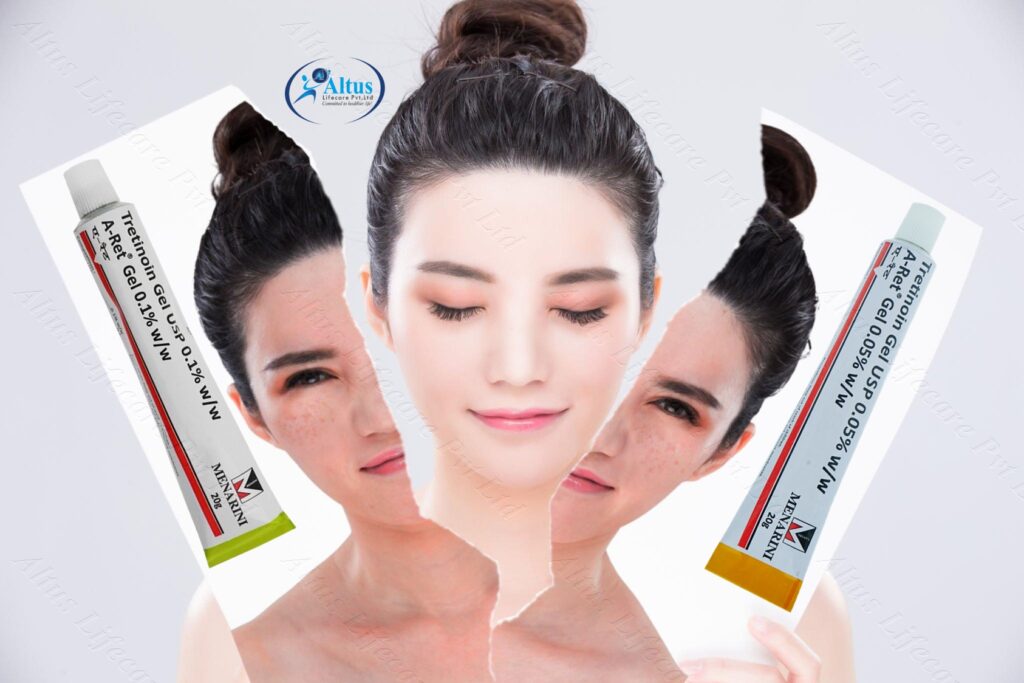
Tips for Using Tretinoin Safely and Effectively
To ensure optimal results and minimize potential side effects, keep the following tips in mind when using tretinoin:
Start with a Lower Concentration: If you’re new to tretinoin, begin with a lower concentration to allow your skin to adjust gradually. Higher concentrations can be more potent and may cause more irritation initially.
Use Sunscreen Daily: Protecting your skin from the sun is crucial when using tretinoin. Apply a broad-spectrum sunscreen with an SPF of 30 or higher every day, even on cloudy days.
Avoid Harsh or Drying Skincare Products: Tretinoin can already cause dryness and irritation, so it’s best to avoid using harsh or drying skincare products, such as strong exfoliants or alcohol-based toners, while using tretinoin.
Be Patient and Consistent: Results with tretinoin take time. It can take several weeks to months to see significant improvements in your skin. Be patient and use tretinoin consistently as directed by your dermatologist.
Precautions and Considerations
While tretinoin can be highly effective, it’s important to consider the following precautions:
Consult with a Dermatologist: Tretinoin is a prescription-only medication. Before incorporating it into your skincare routine, consult with a dermatologist who can evaluate your skin, recommend the appropriate concentration, and provide personalized guidance.
Pregnancy and Breastfeeding: Tretinoin is not recommended during pregnancy or while breastfeeding. It’s crucial to discuss any skincare treatments with your healthcare provider during these periods.
Interactions with Other Skincare Ingredients: Tretinoin may interact with certain skincare ingredients, such as benzoyl peroxide or alpha hydroxy acids. Talk to your dermatologist about any other skincare products you’re using to ensure compatibility.
Alternatives to Tretinoin
While tretinoin is a popular choice for skin rejuvenation, there are alternative options available:
Retinol: Retinol is a milder form of vitamin A that is available over-the-counter. It converts into tretinoin within the skin and provides similar benefits, although the results may be less potent.
Retinoid Derivatives: Other retinoid derivatives, such as adapalene or tazarotene, are available by prescription and can offer similar effects to tretinoin.
Prescription Retinoids: Apart from tretinoin, there are other prescription retinoids, such as tretinoin microsphere gel or tretinoin cream, that may suit different skin types or preferences. Your dermatologist can help determine the best option for you.
Conclusion
Tretinoin is a powerful skincare ingredient that can address various skin concerns, including acne, wrinkles, and hyperpigmentation. By understanding its benefits, proper usage, and necessary precautions, you can harness the potential of tretinoin for healthier, more radiant skin. Remember to consult with a dermatologist to ensure personalized advice and guidance tailored to your skin’s unique needs.
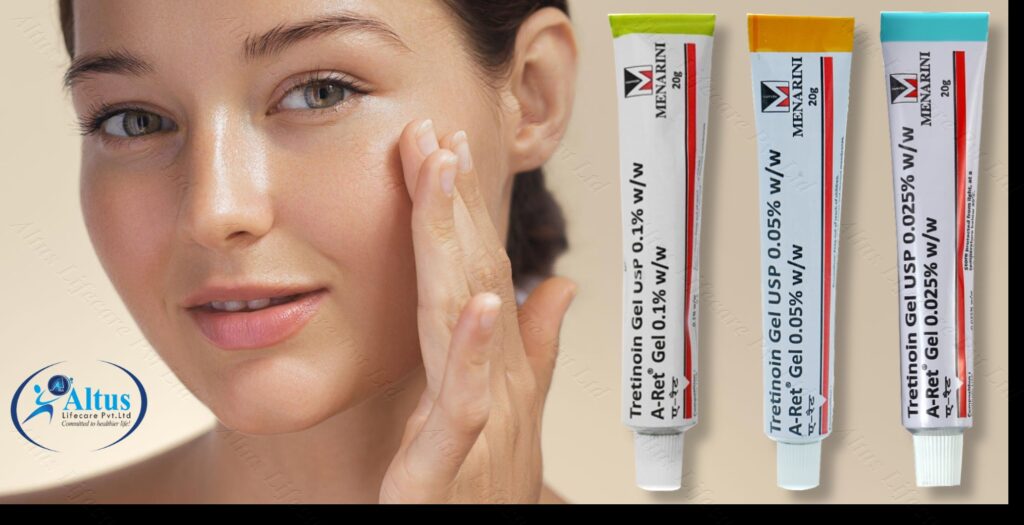
FAQs
1. Can I use tretinoin if I have sensitive skin?
While tretinoin can cause initial skin irritation, it can be used for sensitive skin types. It’s best to start with a lower concentration and gradually increase the frequency of use to allow your skin to adjust.
2. How long does it take to see results with tretinoin?
Results with tretinoin can vary from person to person. Generally, it can take several weeks to months of consistent use to see noticeable improvements in your skin’s texture, tone, and acne.
3. Can I use tretinoin during the day?
Tretinoin is typically applied at night due to its potential to increase sensitivity to sunlight. However, your dermatologist may recommend alternative usage instructions based on your specific needs.
4. Is tretinoin suitable for all skin types?
Tretinoin can be suitable for various skin types, but it’s important to consult with a dermatologist to determine the appropriate concentration and usage guidelines for your specific skin concerns.
5. Can tretinoin help with acne scars?
Tretinoin can help fade acne scars over time by promoting cell turnover and encouraging the growth of new, healthy skin cells. However, it may not eliminate deep or severe scars entirely. Other treatments, such as laser therapy, may be necessary for more significant scarring.
6. Can I use tretinoin if I have dry skin?
Tretinoin can be used for dry skin, but it’s important to approach it with caution. Dry skin tends to be more sensitive, so starting with a lower concentration and gradually increasing the frequency of use can help minimize dryness and irritation. Additionally, be sure to moisturize your skin thoroughly after applying tretinoin.
7. Can I wear makeup while using tretinoin?
Yes, you can wear makeup while using tretinoin. However, it’s essential to choose non-comedogenic and gentle makeup products that won’t clog your pores or further irritate your skin. It’s also recommended to wait for at least 20-30 minutes after applying tretinoin before applying makeup to ensure proper absorption.
8. Can tretinoin be used on other parts of the body besides the face?
Yes, tretinoin can be used on other parts of the body besides the face. It can be beneficial for treating acne, hyperpigmentation, and signs of aging on areas such as the neck, chest, and hands. However, consult with a dermatologist for specific instructions and recommendations.
9. Can I use tretinoin with other skincare products?
While using tretinoin, it’s best to avoid combining it with other potentially irritating or exfoliating skincare products, such as benzoyl peroxide, alpha hydroxy acids (AHAs), or other retinoids. These combinations can increase the likelihood of skin irritation. However, you can incorporate gentle cleansers, moisturizers, and sunscreen into your skincare routine while using tretinoin.
10. How long should I continue using tretinoin?
The duration of tretinoin usage can vary depending on individual needs and goals. In most cases, it’s a long-term commitment to maintain the benefits. Many people continue using tretinoin to manage acne, improve skin texture, and address signs of aging. Your dermatologist can provide guidance on the appropriate duration of use based on your specific concerns.
Remember, if you have any additional questions or concerns, it’s always best to consult with a dermatologist or healthcare professional who can provide personalized advice and guidance tailored to your skin’s unique needs.
Buy Tretinoin Cream online from www.worldclasstretinoin.com
